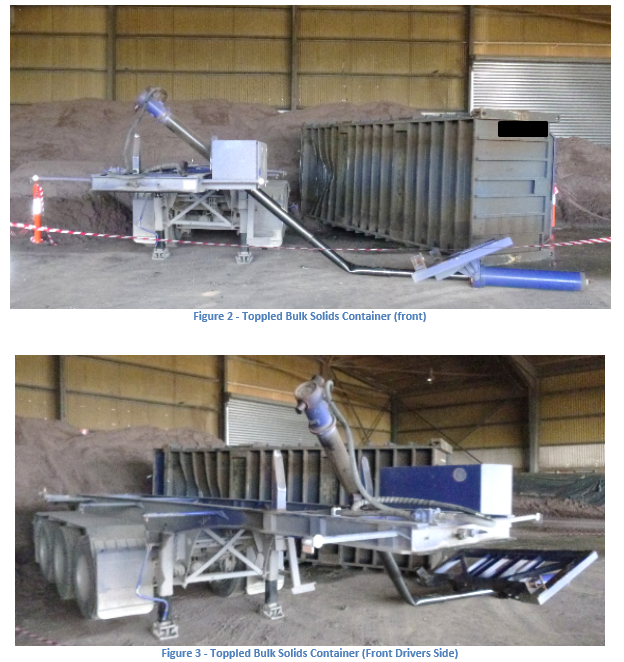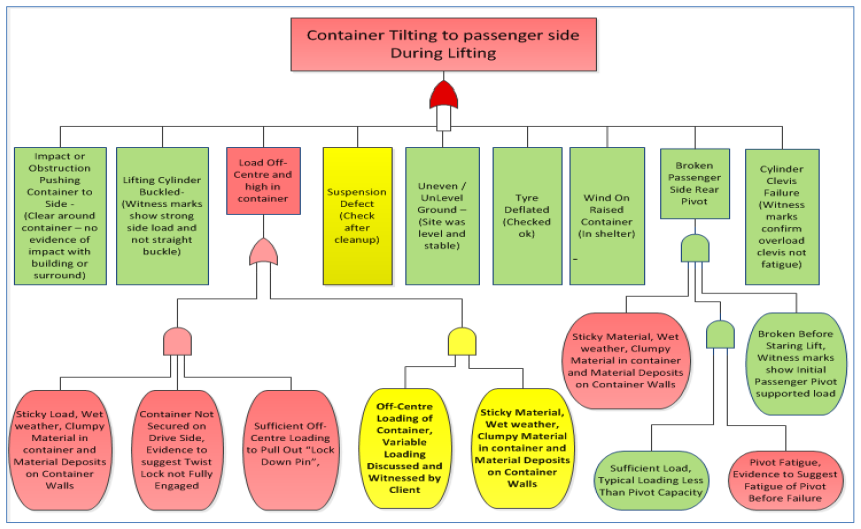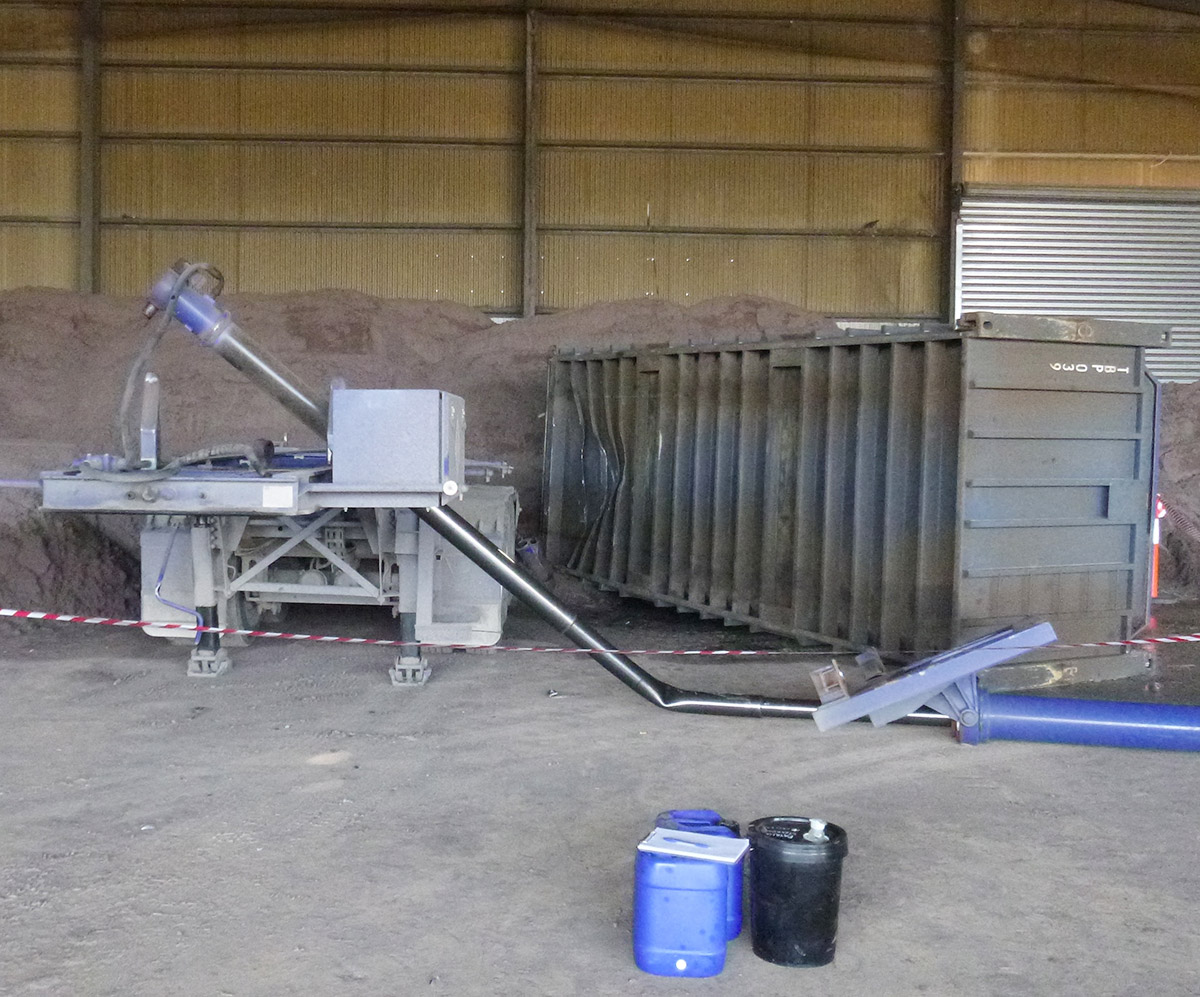Project Scope
Following a dangerous incident in which a container fell off a truck whilst it was tipping, Ingenia was asked to undertake a forensic investigation at the site. The client asked for both a verbal and written opinion on the likely contributing factors to the incident.

Challenges
During the site visit, the damaged trailer and tipped bulk solids container were inspected by the Ingenia team. The standard discharge procedure of the tipping trailer was outlined by site staff.
The incident occurred within an offloading shed as the container was being tipped rear-ward and it began to lean towards the passenger side. The lean was noted, however the tipping operation of the container was not stopped or able to be stopped before collapse. The instability of the trailer reached a critical lean angle and the container toppled from the trailer mounting points and fell to the ground. A proportion of the sand remained in the container, indicating that the sand had not been fully unloaded from the container prior to the collapse and the system was under load at point of failure.
An inspection of the damaged truck and tipped container was undertaken, with significant damage noted which included a broken rear container pivot, buckled lifting ram and attachments. This was followed by an onsite discussion of the truck operation, methods and practices, and potential factors leading to the failure.
A fault tree analysis was undertaken to investigate the likely cause of the fault. The image below shows the most likely contributing factors for this failure highlighted in red, while yellow indicates a reduced likelihood and green indicates a low likelihood of the factors being the direct cause of the failure.

Conclusion
After a series of in-depth investigations and interviews with site staff regarding the operation of the truck, the contents of the container and more, the following assessment and recommendations were made to the client:
Assessment
The most likely failure mode was determined to be the off-centre load which led to instability of the trailer. This was caused by a “sticky” load and an ineffective rear driver-side twist lock, allowing the pull out of the twist lock pin form the corner container latch. This had the secondary effect of overloading the hydraulic cylinder clevises and the passenger side rear bolster.
Recommendations
- Implement procedures and processes to minimise or eliminate sticky material and obtain balanced loads. We cannot advise how easy this would be to implement and manage but if loading can be managed to prevent imbalance and ensure flow-ability then accidents will be prevented. Alternatively, implement adequate inspection prior to lifts to determine if loads are safe to lift. Again we are not sure if this can be implemented effectively.
- Improve hold down anchors to help resist the toppling of the container at least up to a critical lean angle. This will increase the initial stability of the containers. This increased stability is likely to lead to a reduction in the incident rate, however we cannot guarantee that accidents will be prevented. Also if a significant instability (uneven load) occurs the severity of the accident will be worse. Therefore we recommend that a risk assessment is conducted to determine the value of improved locks.
- Investigate device/s to detect imbalance early and warn or prevent further lifting. Without detailed analysis, we believe that the monitoring of differential suspension air bag pressure or strain gauges on the rear support posts may effectively measure imbalance.
- Implement mag-particle crack inspection on an annual basis. A fatigue crack was found in the failed passenger support pivot. This did not cause the accident but contributed to the failure of this support during the event. Left un-detected this crack would have led to a collapse.
- Check trailer suspension components for damage and repair appropriately. Determine if any defect is present in the suspension that could have contributed to imbalance under load.
